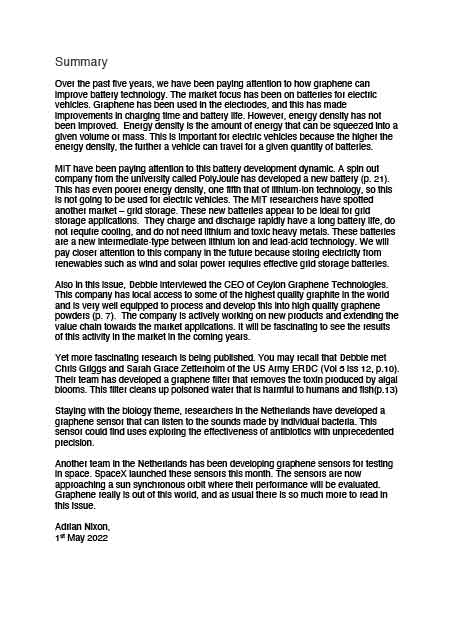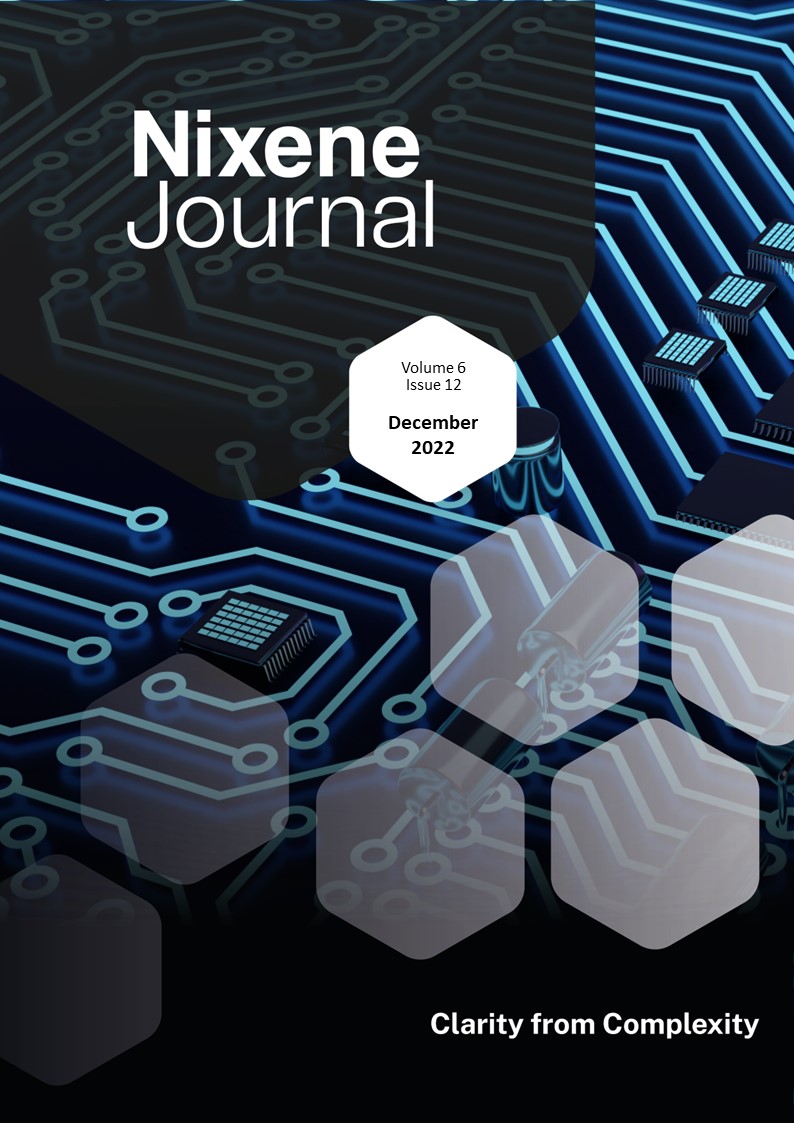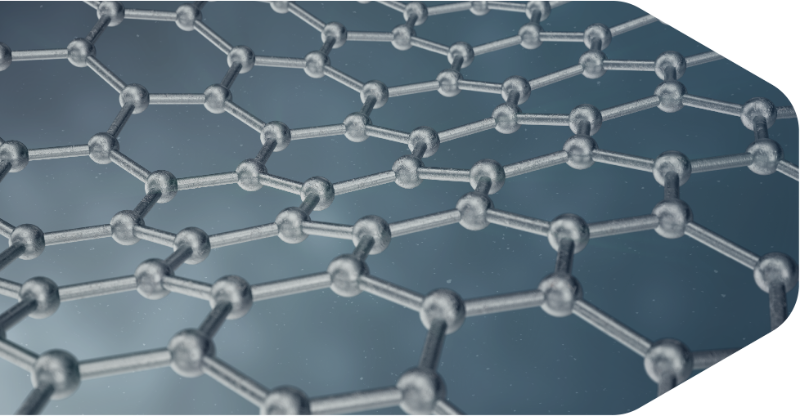Description
Over the past five years, we have been paying attention to how graphene can improve battery technology. The market focus has been on batteries for electric vehicles. Graphene has been used in the electrodes, and this has made improvements in charging time and battery life. However, energy density has not been improved. Energy density is the amount of energy that can be squeezed into a given volume or mass. This is important for electric vehicles because the higher the energy density, the further a vehicle can travel for a given quantity of batteries.
MIT have been paying attention to this battery development dynamic. A spin out company from the university called PolyJoule has developed a new battery (p. 21). This has even poorer energy density, one fifth that of lithium-ion technology, so this is not going to be used for electric vehicles. The MIT researchers have spotted another market – grid storage. These new batteries appear to be ideal for grid storage applications. They charge and discharge rapidly have a long battery life, do not require cooling, and do not need lithium and toxic heavy metals. These batteries are a new intermediate-type between lithium ion and lead-acid technology. We will pay closer attention to this company in the future because storing electricity from renewables such as wind and solar power requires effective grid storage batteries.
Also in this issue, Debbie interviewed the CEO of Ceylon Graphene Technologies. This company has local access to some of the highest quality graphite in the world and is very well equipped to process and develop this into high quality graphene powders (p. 7). The company is actively working on new products and extending the value chain towards the market applications. It will be fascinating to see the results of this activity in the market in the coming years.
Yet more fascinating research is being published. You may recall that Debbie met Chris Griggs and Sarah Grace Zetterholm of the US Army ERDC (Vol 5 iss 12, p.10). Their team has developed a graphene filter that removes the toxin produced by algal blooms. This filter cleans up poisoned water that is harmful to humans and fish(p.13)
Staying with the biology theme, researchers in the Netherlands have developed a graphene sensor that can listen to the sounds made by individual bacteria. This sensor could find uses exploring the effectiveness of antibiotics with unprecedented precision.
Another team in the Netherlands has been developing graphene sensors for testing in space. SpaceX launched these sensors this month. The sensors are now approaching a sun synchronous orbit where their performance will be evaluated. Graphene really is out of this world, and as usual there is so much more to read in this issue.
Adrian Nixon,
1st May 2022










